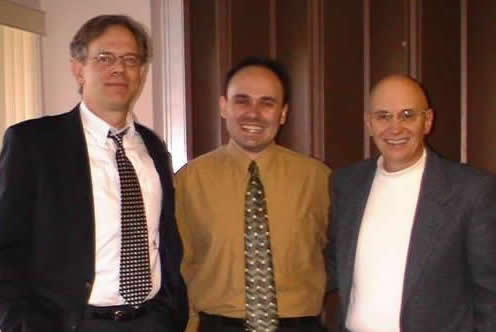
Background: What is the VLS?
Objective
Much information is available concerning how older adults compare to younger adults on a variety of cognitive, biomedical, biological, clinical, neuropsychological, lifestyle, personality, social, physiological, and health indicators. However, relatively little is known about whether and how the processes represented by these indicators actually change across adulthood. The Victoria Longitudinal Study was designed in part to examine the profiles, patterns, and predictors (modifiers) of aging-related brain and cognitive changes. We examine these characteristics often over multiple longitudinal waves covering a 40-year band of aging.
What and Why?
The basic research issues are both descriptive (i.e., What changes actually occur with aging? What is the magnitude and direction of these changes?) and explanatory (i.e., What factors or interactions predict or modifiy these changes? What accounts for individual differences in rate, level, or outcome?).
Leadership
The VLS was founded in the late 1980s by three main co-investigators, Drs. Roger A. Dixon, Christopher Hertzog, and David F. Hultsch. As the VLS grew in the 1990s, the three friends would meet regularly in Victoria and elsewhere to design, plan, execute, and report new research. In the early 2000s, Dr. Dixon, the Principal Investigator and Director of the VLS, moved to the University of Alberta. Since then, the VLS has operated on two supportive university sites: (1) the research and scientific headquarters at the University of Alberta and (2) the satellite data collection lab at the University of Victoria. In recent years, Dr. G. Peggy McFall has joined with Dr. Dixon to provide new leadership and innovative directions to the research programs of the VLS.
Design
The VLS was begun in the late 1980s, with the initial goal of examining profiles and predictors of cognitive changes in relatively healthy, community-dwelling middle-aged and older adults. The ambitious research design called for a series of three large samples of adults (initially ranging in age from 55 to 85 years) to be repeatedly interviewed and tested over a long period of time. The initial blueprint called for the three VLS samples to begin in the 1980s, 1990s, and 2000s and to be followed for 6-8 waves of measurement. In addition, recent large and targeted comparison groups (e.g., young, middle-aged, Alzheimer's) are also recruited and monitored by the VLS.
Growth of the VLS
Now over 25 years old, the VLS has grown dramatically in recent years. A dynamic project, new participants, collaborators, measures, methodologies, and research ideas have been added. The latest battery of tests and tools reflects the goal of further understanding interrelated aspects of human brain and cognitive aging. Our biological markers were initially installed in the 1990s, and have grown in interactive prominence since then. Our health and risk/protection indicators are comprehensive and pertinent to predicting differential trajectories of neurocognitive aging. Our cognitive measures include numerous indicators of memory (episodic, semantic, working), neurocognitive speed and resources (speed, inconsistency), executive function (inhibition, updating, switching), cognitive resilience and exceptionality, and adaptive or compensatory mechanisms. In addition, we have a broad swath of measures of related constructs such as medication and illness information, health beliefs and reports, health risks, physiological capacities, sensory status, personality and affect, activities and lifestyle, neuropsychological indicators, and metacognitive knowledge and beliefs. Recent significant and novel directions include (1) OMICs approaches such as genomics, metabolomics, and lipidomics and (2) data-driven (data mining) and machine learning technologies applied to large and dynamic data sets.
The VLS benefits from continuous funding from the National Institutes of Health, and especially the National Institute on Aging. Roger Dixon is the Principal Investigator for the NIA grant (R01 AG008235) supporting the VLS and both labs (Edmonton, Victoria).

In the 2000s Roger Dixon, Stuart MacDonald, and David Hultsch met regularly in Edmonton and Victoria to plan new VLS initiatives and to work on research reports.
VLS dinner at a recent Cognitive Aging Conference in Atlanta. From left around table: Shraddha, Correne, Shannon, Peggy, Kaarin, Paul, Stuart, Chris,
Roger, and Brent.


©2023 Victoria Longitudinal Study

%20resized.png?crc=408862370)